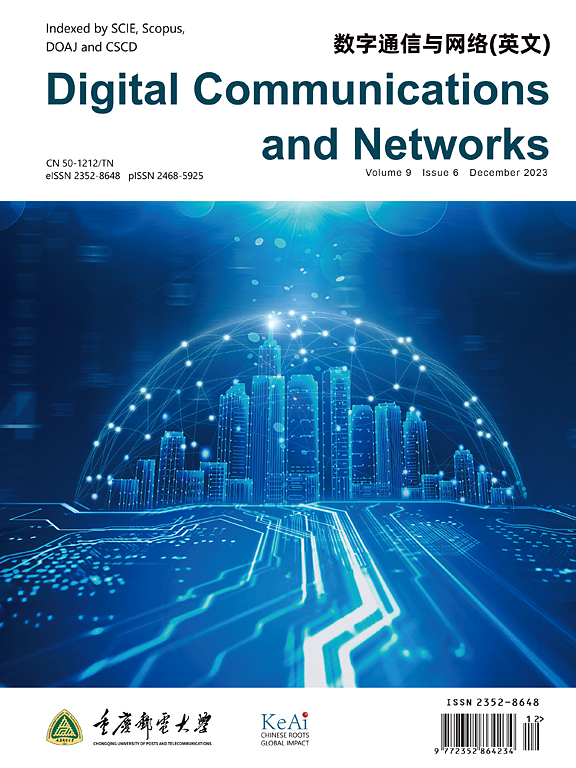A multi-dimensional trust attestation solution in 5G-IoT
IF 7.5
2区 计算机科学
Q1 TELECOMMUNICATIONS
引用次数: 0
Abstract
The core missions of IoT are to sense data, transmit data and give feedback to the real world based on the calculation of the sensed data. The trust of sensing source data and transmission network is extremely important to IoT security. 5G-IoT with its low latency, wide connectivity and high-speed transmission extends the business scenarios of IoT, yet it also brings new challenges to trust proof solutions of IoT. Currently, there is a lack of efficient and reliable trust proof solutions for massive dynamically connected nodes, while the existing solutions have high computational complexity and can't adapt to time-sensitive services in 5G-IoT scenarios. In order to solve the above problems, this paper proposes an adaptive multi-dimensional trust proof solution. Firstly, the static and dynamic attributes of sensing nodes are metricized, and the historical interaction as well as the recommendation information are combined with the comprehensive metric of sensing nodes, and a multi-dimensional fine-grained trusted metric model is established in this paper. Then, based on the comprehensive metrics, the sensing nodes are logically grouped and assigned with service levels to achieve the screening and isolation of malicious nodes. At the same time, the proposed solution reduces the energy consumption of the metric process and optimizes the impact of real-time metrics on the interaction latency. Simulation experiments show that the solution can accurately and efficiently identify malicious nodes and effectively guarantee the safe and trustworthy operation of 5G-IoT nodes, while having a small impact on the latency of the 5G network.
5G-IoT中的多维信任认证解决方案
物联网的核心任务是感知数据,传输数据,并根据感知数据的计算向现实世界反馈。传感源数据和传输网络的信任对物联网安全至关重要。5G-IoT以其低延迟、宽连接、高速传输的特性,拓展了物联网的业务场景,同时也给物联网的可信证明解决方案带来了新的挑战。目前缺乏针对海量动态连接节点的高效可靠的可信证明解决方案,现有解决方案计算复杂度高,无法适应5G-IoT场景下的时间敏感业务。为了解决上述问题,本文提出了一种自适应多维信任证明方案。首先,对感知节点的静态和动态属性进行度量,并将历史交互和推荐信息与感知节点的综合度量相结合,建立多维细粒度可信度量模型;然后,基于综合度量,对感知节点进行逻辑分组并分配服务等级,实现对恶意节点的筛选和隔离。同时,该方案降低了度量过程的能耗,优化了实时度量对交互延迟的影响。仿真实验表明,该方案能够准确高效地识别恶意节点,有效保障5G- iot节点的安全可信运行,同时对5G网络时延影响较小。
本文章由计算机程序翻译,如有差异,请以英文原文为准。
求助全文
约1分钟内获得全文
求助全文
来源期刊

Digital Communications and Networks
Computer Science-Hardware and Architecture
CiteScore
12.80
自引率
5.10%
发文量
915
审稿时长
30 weeks
期刊介绍:
Digital Communications and Networks is a prestigious journal that emphasizes on communication systems and networks. We publish only top-notch original articles and authoritative reviews, which undergo rigorous peer-review. We are proud to announce that all our articles are fully Open Access and can be accessed on ScienceDirect. Our journal is recognized and indexed by eminent databases such as the Science Citation Index Expanded (SCIE) and Scopus.
In addition to regular articles, we may also consider exceptional conference papers that have been significantly expanded. Furthermore, we periodically release special issues that focus on specific aspects of the field.
In conclusion, Digital Communications and Networks is a leading journal that guarantees exceptional quality and accessibility for researchers and scholars in the field of communication systems and networks.
 求助内容:
求助内容: 应助结果提醒方式:
应助结果提醒方式:


